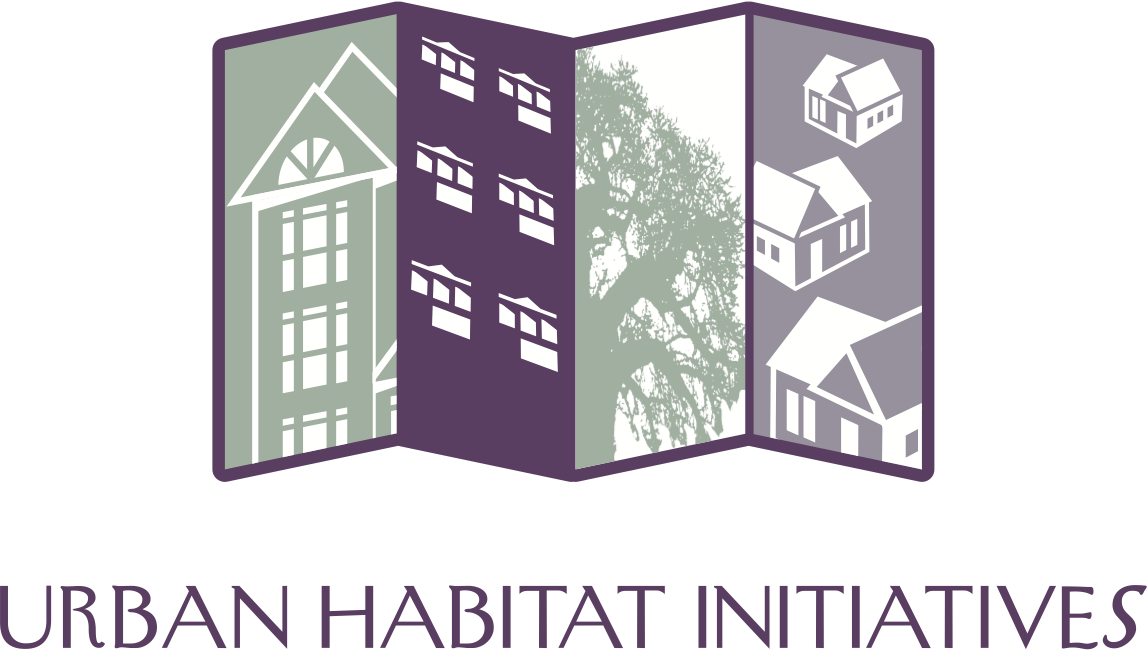
In this Green in Action Minisode, host Kimberly Vermeer takes a deep dive into how Enterprise Green Communities’ new tool, the 2020 Green Communities Criteria, empowers practitioners to design more sustainable buildings and communities. In the episode, Enterprise Green Communities staff Ray Demers, Senior Director of Design Leadership Initiatives, and Krista Eggers, Vice President of National Initiatives discuss how the Integrated Design category of the 2020 Criteria help deeply root a project within a community. Learn about how new tools like the Project Priorities Survey brings health, climate, and cultural resilience to the forefront of affordable housing design.
Topics Discussed:
- Enterprise Green Communities 2020 Criteria
- The Project Priority Survey
- Integrating health and resilience in green design
- Identifying collective priorities
Resources:
Blueprint for Greening Affordable Housing, Revised Edition
Enterprise 2020 Green Communities Criteria
Getting into Integrated Design
Minisode Deep Dive: Integrated Design in Enterprise Green Communities Transcript
[Theme Music]
KIMBERLY VERMEER: Hello! I’m Kim Vermeer, host of Green in Action, a podcast where we celebrate green leadership in affordable housing.
In the Integrated Design episode, we explored how it is a different approach to design that centers the process on the residents and desired outcomes, engaging the entire range of design disciplines along with owners, residents and community stakeholders in a holistic planning approach. The result is better, greener projects. We heard from Krista Eggers and Ray Demers at Enterprise Community Partners as they shared their passion for integrative design and its potential to generate great affordable housing. Let’s meet them again. First, Krista:
KRISTA EGGERS: I’m a Vice president of National Initiative at Enterprise. I’ve been here about eight and a half years and lead the program area on our national initiative team called Building Resilient Future, really all about how to help people living in affordable housing communities thrive in the face of climate change.
RAY DEMERS: Hi Kim, really happy to be here with you today. My name is Ray Demers, I’m a senior director with the National Initiatives Team at Enterprise. I have been with Enterprise almost 11 years and I oversee our design initiatives. So really working at the intersection of sustainability, design, and health to try to improve the quality and quantity of affordable housing.
KIMBERLY VERMEER: In the main episode we learned how much integrative design is woven through the Green Communities Criteria, a green rating system developed by Enterprise Community Partners specifically for affordable housing. But we did not have time to go into the details of how the Integrative Design category of the Criteria has been updated for the new 2020 version. Let’s do that now.
KRISTA EGGERS: I think integrative design is the core of green communities, and I think that if you can succeed in embodying an approach to integrative design in your project, you can succeed with your project, period. In our program, we say that a successful integrative design process engages people, identifies collective priorities, and it ensures that sustainability, health, resilience and placemaking objectives are met.
KIMBERLY VERMEER: And the goal of the Integrative Design category is to make a successful process achievable.
RAY DEMERS: What we tried to do in the 2020 criteria, was really set up and frame up the rules of the road for what success looks like when implementing a best in class integrated design process and then allow folks to find their way through that process depending upon the community they have, the residents they have, the neighborhood associations, the contractors, the building science specialists and subcontractors that they have, to build and create an integrated design process that matches their location and their needs.
KIMBERLY VERMEER: The Green Communities team made several key changes to the Integrative Design category’s criteria for 2020. The first is a new feature, a requirement for a “Project Priorities Survey”.
KRISTA EGGERS: We’re really excited about this Project Priorities Survey, what the Project Priorities survey does is serve as a North Star for the design process, for the development process. So it’s a couple of pages and includes a few different questions that the project team fills out together, listening to the community and identifying what relationship that people will be living in the property want to have with where they’re going to be living. And then answering a couple of questions about the health characteristics that the property is looking to elevate, how far the property wants to go in terms of energy efficiency and moving towards zero energy or clean energy sources and looking also at what different climate hazards is the property most susceptible to. And then bringing all of that together and writing a very short we’re talking just a couple of sentences, project mission that brings all of those together.
KIMBERLY VERMEER: I’m excited about this new tool! It will be really helpful for pushing integrative “green thinking” to the earliest stages of project planning. I hope that project teams start putting the survey into practice soon. The second big change is to bring health and climate resilience forward into the Integrative Design Category. In the previous 2015 edition of the Criteria these elements were added as separate items, in part because they were newer concepts to incorporate in green affordable housing. But things have changed.
KRISTA EGGERS: Health and resilience are key parts of integrative design within the 2020 criteria because they’re key parts of people’s lives today. So with 2020, we really combined them all together in that Project Priorities survey that starts off the whole process. So you’re identifying what are your goals in terms of how you want to influence resident health outcomes, how you want to have a property that resilient to natural disasters, and what kind of sustainability or energy efficiency goals you want to have in that Project Priority survey and then use the rest of the integrative design process to really figure out what multi-benefit strategies can you use in your project to check all those three boxes at once?
KIMBERLY VERMEER: These priorities come together within the Integrative Design Category as four Mandatory and three Optional Criteria. The first mandatory criterion is that new Project Priorities Survey that Krista described. Ray explains the next few:
RAY DEMERS: One point two is an integrated design charrette and coordination meeting. This is really critical to ensure that decisions are being made collaboratively and problems are being solved.
One point three is focusing on documentation. We all know that ambitions and ideas are great, but if any of those intentions do not make it into the project, documents, the plans and specs, they’re often going to get missed.
One point four is a criterion on construction management, so this is new in the 2020 criteria. Really what it’s intended to do is to ensure that every person working on a site is going to be oriented to all of the work that had been done previously and to align every one of the subcontractors and folks working on site with the process that’s come before them.
KIMBERLY VERMEER: As Krista said earlier, health and climate are so fundamental to what is happening today that they really must be included from the beginning of project planning. So, for the 2020 Criteria, these topics are at the forefront, part of Integrative Design. Teams are invited to consider health, climate and cultural resilience as foundational to green design through these optional criteria. Ray continues with his description:
RAY DEMERS: The design for health criterion is optional, but people spend a lot of time in their homes. And it’s really important that we plan for resident health because we think that it’s important that home is a place of healing and actually meets resident health needs.
One point six is the multi hazard risk and vulnerability assessment. Climate change is happening, and it’s really important that projects plan ahead and those risks and vulnerabilities are different depending upon where you live and if you’re in California or Vermont or Minnesota or Florida.
KIMBERLY VERMEER: And finally:
RAY DEMERS: And then one point seven, strengthening cultural resilience an often overlooked or under discussed aspect of resilience is resident resilience and the community members. So this is really a way to double down on rooting your project within the community.
KIMBERLY VERMEER: And Enterprise Community Partners is committed to creating and sharing tools that help teams succeed. Ray describes some of them:
RAY DEMERS: We have a lot of tools online to help figure out who a community is, who the residents are, how to deeply root a project within a community. I think more recently, one of the really exciting things that we’ve developed is Design Matters toolkit. This is a online Web based platform. And there you’ll find a series of tools and resources. You’ll find links to our Community Assessment Tool, Opportunity 360. You’ll find participatory design toolkits. You’ll find creative placemaking tools for community developers. This is going to make your project more successful. But ultimately, it’s going to build dignity within the residents that are living in your projects.
KIM VERMEER: Krista offers her final thoughts:
KRISTA EGGERS: I really think that the Project Priority survey that we created as part of 2020 is going to be more and more important as we move forward, as project teams become more dispersed, as goals for affordable housing performance are amplified, being able to hold on to that North Star that is going to become ever more important.
KIMBERLY VERMEER: And with that, we wrap up our deeper dive in the Integrative Design Category of the 2020 Green Communities Criteria. The complete Criteria, information about project certification and access to tools can be found at the website: greencommunitiesonline.org. Thanks again to Krista and Ray for their passion and commitment to green affordable housing and for helping us understand the power of integrative design, and how to harness it using the Green Communities Criteria.
This is the Green in Action podcast, where we explore green leadership in affordable housing. Thanks for listening! You can find us on Twitter at @UHIPodcast. Subscribe to us wherever you listen to podcasts, and rate us and review us on Apple Podcasts. Thanks for doing that – it helps spread the word about Green in Action
This episode was produced by Kimberly Vermeer, and Klara Kaufman. Sound engineering and audio editing by Carl-Isaak Krulewitch. Music by Matt Vermeer. Kimberly Vermeer is the Executive Producer. Green in Action is an Urban Habitat Initiatives production.
